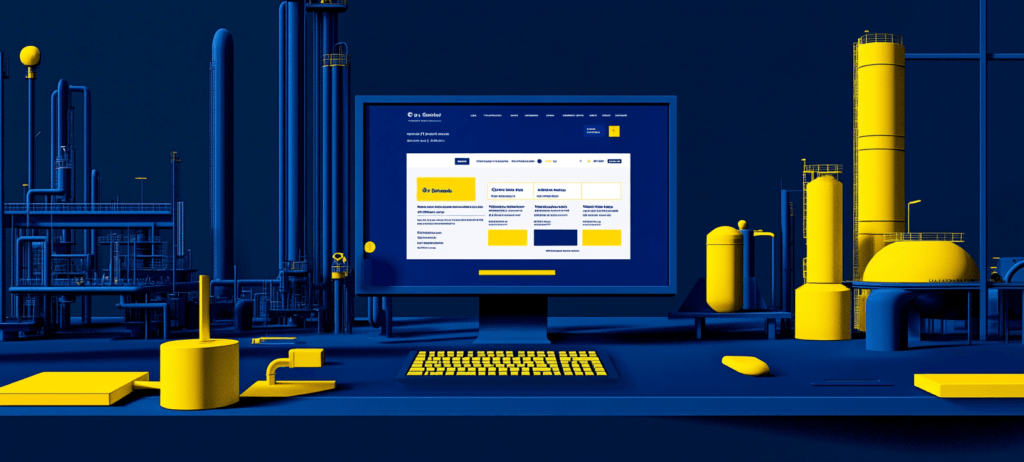-
 Published: Jul 18, 2023
Published: Jul 18, 2023
-
 10 min. read
10 min. read
-
 Abby Fields
Abby Fields Branded Content Specialist
Branded Content Specialist
- Abby is a data-driven content marketer with certifications in inbound marketing and content marketing. She’s written hundreds of articles covering digital marketing topics — a few of her specialties include first-party data, marketing and data analytics, marketing strategy optimization, and SEO. When she isn’t writing or optimizing content, Abby loves to spend time reading the latest mystery novel, having movie marathons with lots of snacks, and jamming out to Shania Twain.
What is data mining?
Data mining is the process of extracting valuable insights from large sets of data, helping businesses make informed decisions and uncover hidden patterns.
Data is critical for any business that wants to succeed. It helps you understand your audience, implement effective marketing strategies that boost sales, and acquire new customers and clients.
Data mining is a type of data analysis that can help you analyze valuable information about your website, audience, and more to improve your strategies to drive more revenue.
This page will cover everything you need to know about data mining. Check out a quick overview of the topics we’ll cover below:
- What is data mining?
- Data mining process: How does data mining work?
- 6 data mining techniques
- What are the benefits of data mining?
- Examples of data mining
- Data mining FAQs
Keep reading to learn more!
Top tip: Never miss out on the latest data-driven tips and tricks from award-winning analytics experts by signing up for our newsletter, Revenue Weekly!
Don’t miss our Marketing Manager Insider emails!
Join 200K smart marketers for the hottest marketing news and insights in your inbox.
Inline Subscription Form
“*” indicates required fields


What is data mining?
Data mining is the process of analyzing large amounts of data to discover insights that help you improve your business operations and performance.
You can use data mining to turn raw data (data that hasn’t yet been processed or organized) into useful information that enables you to drive more sales and revenue for your company.
For example, you can use your insights to learn more about your current customers and prospects, launch targeted ads, or improve your team’s efficiency.
Data mining process: How does data mining work?
Now that you know what data mining is, let’s dive into how it works.
We can break the data mining process down into five stages:
- Establishing your goal
- Determining the data you want to analyze
- Collecting your data
- Analyzing your data
- Optimizing your strategies
1. Establishing your goal
Before you can analyze your data, you need to have a clear business goal in mind of the questions you want to answer and the problems you want to solve with your data.
Examples of business goals are:
- Learning more about your current customers
- Improving sales from your pay-per-click (PPC) ads
- Driving more traffic to your website
Without establishing a clear focus or goal, you’ll look at endless amounts of data without identifying any useful information to help you improve your business performance.
2. Determining the data you want to analyze
Now that you’ve established your goal, the next step in the data mining process is to determine the data you want to analyze to help you reach this goal.
Let’s look at the same goals we mentioned above as an example of types of data you can analyze:
- Learning more about your customers: For this goal, you’ll want to analyze your customers’ demographics, purchase history, and behavior on your website.
- Improving sales from PPC ads: For this goal, you’ll want to analyze the results of your PPC campaign. This can include looking at your total clicks, impressions, cost-per-click (CPC), conversion rate, and return on ad spend (ROAS).
- Driving more traffic to your website: For this goal, you can analyze your number of website visits, amount of active and returning users, and the sources of your web traffic.
Determining the data you want to analyze is essential. Without focusing on specific data sets, you can easily get overwhelmed trying to collect and look at all the available information, wasting time and resources.
3. Collecting your data
Now that you have a clear focus on the data you want to examine, you’ll need to start collecting your data.
There are tons of helpful data analytics tools available to help make this step of the data mining process a breeze.
A data warehouse is one of the best places to store large amounts of data securely. Additionally, you can use other helpful software options to collect specific information about your customers or marketing strategies.
For example, if you want to learn more about your audience, a customer relationship management (CRM) platform is one of the best data mining software options. It automatically collects and tracks valuable information about your prospects and current customers, like their email addresses or job title.
You can also use other data analytics platforms to track results from your marketing campaigns, like RevenueCloudFX.
This industry-leading software enables you to collect essential data from your marketing campaigns and much more. For example, you can use RevenueCloudFX to collect website data, like traffic sources.
4. Analyzing your data
So, you’ve collected the data. What happens next? The most important part of data mining is the analysis stage.
At this stage, you’ll look at your data to identify commonalities, trends, and other valuable insights. You can also take the time to organize your data to make it easier to understand.
For example, when you look at your customer’s demographics, you might notice that most of them are within the same age group or location.
If you analyze the sources of your web traffic, you might notice that most of your traffic comes from organic search results on Google.
Data analysis is crucial because it helps you measure your current results and campaign successes to help you determine how you improve your strategies to drive more revenue in the future.
Bonus Read: What is a Data Stack?
5. Optimizing your strategies
Once you’ve analyzed your data, it’s time to optimize your strategies and business operations based on your findings.
For example, if you notice that the majority of your customers are in the same age group, you can use audience targeting features in your ads to ensure that your promotions reach more people in this age group to boost your sales.
Suppose you determine that a majority of your web traffic comes from Google. In that case, you can implement a search engine optimization (SEO) strategy to increase your rankings to improve your online visibility.
These optimizations help you improve your strategies for the future so you can drive more revenue and grow your business.
6 data mining techniques
Here are six data mining techniques that businesses use to get the most out of their data:
Let’s dive into each one below!
1. Association
Association finds correlations or connections between points in a data set. With association, you can discover unique relationships between data points and establish database connections. This technique is often used for market research and strategizing.
2. Cleaning
Data cleaning involves organizing data and removing any outliers, duplicate data, or corrupt data. It also means filling in any null data. This step prepares the data to be mined for use and analysis.
Cleaning is essential to any data mining technique and process, as it ensures you have the most accurate, detailed data group possible.
3. Clustering
Clustering represents data visually based on their characteristics. This step allows data miners to divide data into relevant groups, making for more informed decisions and analytics.
Classification is another type of clustering in which you group data together based on a set of criteria.
4. Machine learning
Machine learning is a type of artificial intelligence (AI) where computers use algorithms to learn independently. In terms of data mining, this can look like gathering data, sorting it independently, and analyzing patterns and trends.
Neural networks are a type of AI machine learning that aims to mimic how the human brain works. This feature lets computers process data, make decisions, and learn like humans.
5. Prediction
Data prediction is the most common form of data mining and analysis. Prediction seeks to turn a set of data into a future event. This process looks at a large data set, finds patterns, and makes it easier to see what will happen in the future.
There are many ways to use prediction, such as forecasting, cluster modeling, and classification modeling.
6. Visualization
Visualization is about translating data into visual representations so users can interpret it. This step can look like charts, graphs, spreadsheets, and more. Many companies use visualization as part of a data mining strategy to make interpretation easier.
What are the benefits of data mining?
So, why do you need data mining?
There are several benefits of data mining, including:
- Improving your return on investment (ROI): When you invest in marketing strategies, your number one goal is to earn the highest ROI for your efforts. With data mining, you can analyze the success of your campaigns and adjust to help them drive better results for your business.
- Making data-driven decisions: When you improve your processes, you want to ensure your improvements drive the desired results instead of wasting your resources. With data mining, you can make smarter, more informed decisions that rely on data instead of guesses or gut feelings.
- Creating highly-targeted campaigns: When you implement marketing strategies, you need your messages to reach people most likely to purchase your products and services. Data mining helps you learn more about your audience, so you can focus on reaching more of your ideal customers to drive conversions and sales.
Data mining is one of the best ways to measure the success of your current strategies and implement data-driven changes that will improve your revenue so you can help your company reach new heights.
Examples of data mining
Now that we’ve covered what data mining is in detail, we can look at some examples of the sectors that use it:
- Retail: The retail sector is a huge source of data for various companies. These businesses use consumer data to find out what products sell, what marketing materials do best, and how they can reach people to make more profit.
- Mobile service providers: These service providers use data mining to predict churn or determine when people are likely to change vendors. This feature helps providers keep their customers happy and prevent them from switching.
- Insurance: Many insurance companies use data mining to help forecast trends and assess financial status. They can use data mining for credit risk, trading, market risk, and control.
These are a few common industries that use data mining. There are endless ways to incorporate data mining into business and customer relations that extend well beyond these applications.
Data mining FAQs
Here are a few common questions businesses and customers have about data mining.
What does data mining do?
For businesses, data mining helps uncover trends and themes across their customer base to help earn more profit and improve customer service.
For customers, data mining helps you get a better experience with ads, shopping, and service.
What are applications of data mining?
Data mining applications reach across your entire business. Some example applications include:
- Marketing
- Sales
- Finance
- Customer service
Is data mining illegal?
Data mining is not illegal in the U.S. However, there are rules and regulations over how companies can gather and use consumer data in their marketing and sales plans.
Looking for an all-in-one SEO audit tool? You’ve found it
SEO checker provides data on key metrics to give you:
- Complete SEO score
- Site Speed Analysis
- Content Grade
- and more.
Ready to power up your campaigns with data mining?
You now know what data mining is, how it works, and how it can help your business grow. Now you need to put it into action.
At WebFX, we know it’s difficult to track, analyze, and interpret large amounts of data to increase revenue.
That’s why we offer completely done-for-you analytics services. Our data experts will collect and analyze data from your audience, website, marketing strategies, and more. We’ll also optimize and improve your strategies using data-driven insights so your business can earn more revenue.
Ready to get started with the data analytics agency behind over $3 billion in revenue? Call us at 888-601-5359 or contact us online to start planning your personalized data strategy!
-
 Abby is a data-driven content marketer with certifications in inbound marketing and content marketing. She’s written hundreds of articles covering digital marketing topics — a few of her specialties include first-party data, marketing and data analytics, marketing strategy optimization, and SEO. When she isn’t writing or optimizing content, Abby loves to spend time reading the latest mystery novel, having movie marathons with lots of snacks, and jamming out to Shania Twain.
Abby is a data-driven content marketer with certifications in inbound marketing and content marketing. She’s written hundreds of articles covering digital marketing topics — a few of her specialties include first-party data, marketing and data analytics, marketing strategy optimization, and SEO. When she isn’t writing or optimizing content, Abby loves to spend time reading the latest mystery novel, having movie marathons with lots of snacks, and jamming out to Shania Twain. -

WebFX is a full-service marketing agency with 1,100+ client reviews and a 4.9-star rating on Clutch! Find out how our expert team and revenue-accelerating tech can drive results for you! Learn more
Try our free Marketing Calculator
Craft a tailored online marketing strategy! Utilize our free Internet marketing calculator for a custom plan based on your location, reach, timeframe, and budget.
Plan Your Marketing Budget

Proven Marketing Strategies

Proven Marketing Strategies
Try our free Marketing Calculator
Craft a tailored online marketing strategy! Utilize our free Internet marketing calculator for a custom plan based on your location, reach, timeframe, and budget.
Plan Your Marketing Budget
What to read next






